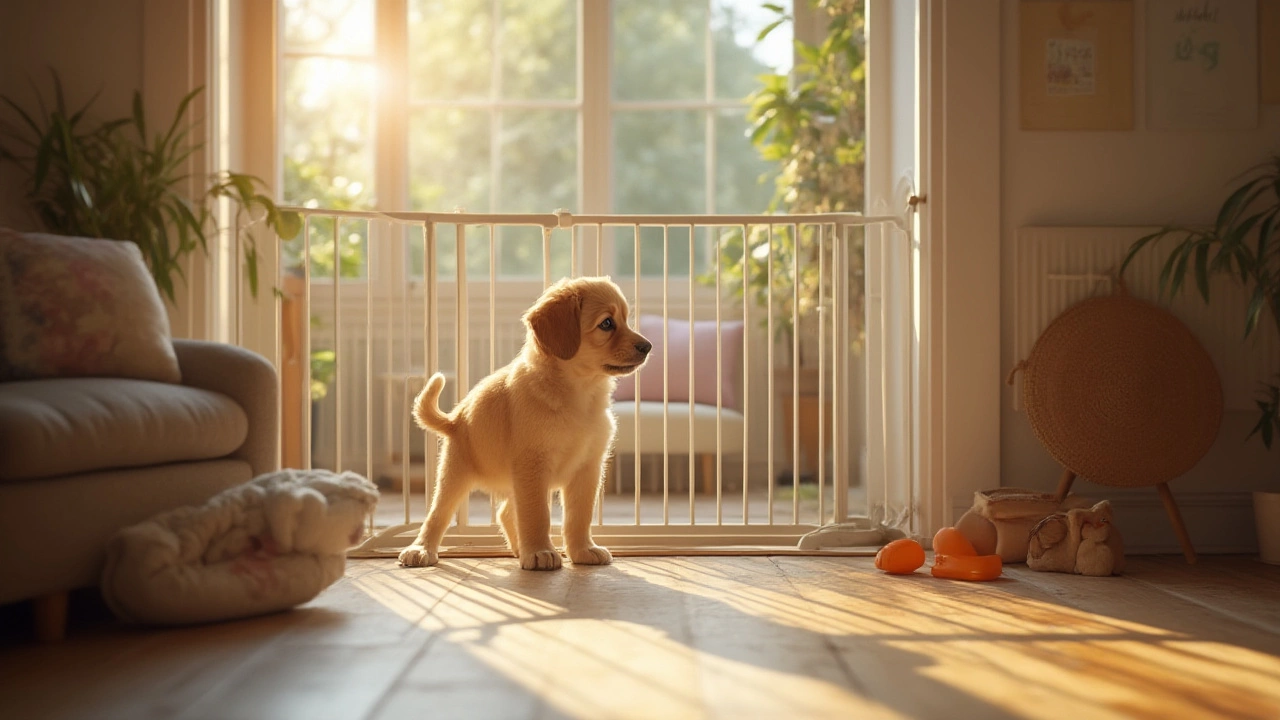Puppy‑Proofing Made Simple: How to Keep Your Home Safe for a New Pup
Bringing a puppy home is exciting, but the little explorer will test every nook and cranny. The best way to avoid costly accidents is to puppy‑proof your space before the chaos begins. The good news? You don’t need a professional—just a few minutes, a checklist, and some common‑sense moves.
Start with the Basics: Remove Hazards and Secure What You Can
First, walk through each room and spot anything a curious nose or teeth could get into. Electrical cords are a favorite chew target, so hide them with cord covers or zip ties. Small objects—like socks, children's toys, or hair ties—should be kept out of reach; they’re easy to swallow and can cause blockages.
Plants are another hidden danger. Many indoor greens, such as pothos or philodendron, are toxic to dogs. Swap them for pet‑safe options like spider plants or herbs you can also use in cooking. And always store cleaning products, medications, and any human food in cabinets with child‑proof locks. A puppy’s sense of smell is powerful, so a locked door is the only reliable barrier.
Make Your Floors and Furniture Puppy‑Friendly
Hard floors are great because they’re easy to clean, but they can be slippery for a wobbly pup. Add non‑slip mats in high‑traffic spots, especially near the kitchen and bathroom. If you have hardwood, consider area rugs that provide traction and a softer landing when they tumble.
Furniture needs a quick audit too. Pull away any throw pillows or blankets that could be shredded and swallowed. Keep remote controls, credit cards, and keys in a drawer—puppies love to play with anything that jingles. If you want to let your pup lounge on the couch, use a washable, chew‑resistant blanket that you can toss over the sofa when you’re not home.
Don’t forget the backyard. Fence gaps, low walls, or broken gates are invitation cards for a runaway pup. Walk the perimeter and mend any holes, then add a “dig‑free” zone by covering soil with mulch or paving stones. A simple buried stake with a hanging marker can remind you where the safe play area begins.
Finally, create a designated puppy zone inside. A crate or pen gives your new friend a secure spot to retreat when things get too overwhelming. Fill it with a comfy bed, a few chew toys, and a water bowl. This not only protects the rest of your home but also gives the puppy a place to call its own.
With these quick steps, you’ll turn a potentially dangerous house into a puppy‑friendly haven. Keep the checklist handy, revisit it as your pup grows, and enjoy watching your new family member explore safely. Happy puppy‑proofing!

When to Let Your Puppy Roam the House: Training, Timing, and Safety Secrets
Wondering when to let your puppy roam the house? Find out how to time it right, prep your home, and avoid common mistakes for a happy, well-behaved pup.
View more